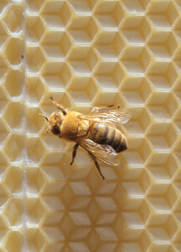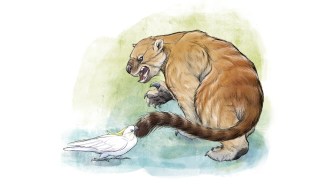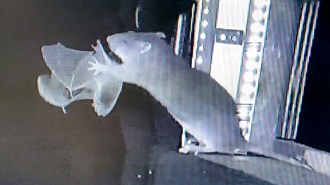After more than a decade of searching, an international team of scientists has found the main gene that separates the girls from the boys among honeybees.

Called csd, it’s the first sex-determining switch sequenced in an animal in which females typically grow from fertilized eggs and males from unfertilized eggs, according to Robert Page Jr. of the University of California, Davis. Called haplodiploidy, this arrangement governs sex determination in some 20 percent of animals, including ants, bees, thrips, white flies, ticks, and mites.
The csd gene has many versions, and a honeybee’s gender depends on whether it inherits only one version or two different ones, the researchers report in the Aug. 22 Cell.
Another investigator of honeybee genetics, Ross Crozier of James Cook University in Townsville, Australia, says that bee researchers have been searching for a sex-switch gene such as csd for years. “We’re disappointed that we didn’t get it, but–congratulations–it’s really wonderful that it’s been done,” Crozier says.
He points out that this match-mismatch system of csd differs fundamentally from the few other sex-determination systems decoded so far. He predicts the new gene will spark some interesting new investigations into the genetics underlying sex, as well as help for the notoriously difficult task of breeding honeybee varieties.
The rough hypothesis for how the genetic switch works goes back to attempts to inbreed honeybees. During these attempts, under artificial conditions, researchers found that sterile males arose from fertilized eggs. In a hive, those larvae usually don’t mature because the female bees quickly detect and eat them. Geneticists in the mid-20th century proposed that one gene determines sex. If a bee receives only one version of that gene–as an unfertilized egg does–or if inbreeding provides identical copies from mom and dad, then junior ends up a male. However, if a bee inherits different versions of that gene from mom and dad, she’s female.
Page says that by the late 1980s, advancing genetic technologies inspired him, his lab colleagues, and Martin Beye, now of Martin Luther University in Halle, Germany, to start chasing the proposed gene. Together, the researchers found markers defining the area of the gene on a specific bee chromosome and then painstakingly mapped the area in increasing detail to reveal csd. The researchers speculate that two versions of the gene’s product–two versions of the same protein–bind together to start female development.
To confirm that the gene’s protein products are involved in gender determination, the U.S.–German team joined Stig Omholt of the Agricultural University of Norway in s to construct RNA that interferes with the activity of a specific version of the gene. When they injected the RNA into fertilized eggs and this version of csd ceased working effectively, the lone functioning version made the bee a male.
****************
If you have a comment on this article that you would like considered for publication in Science News, send it to editors@sciencenews.org. Please include your name and location.







